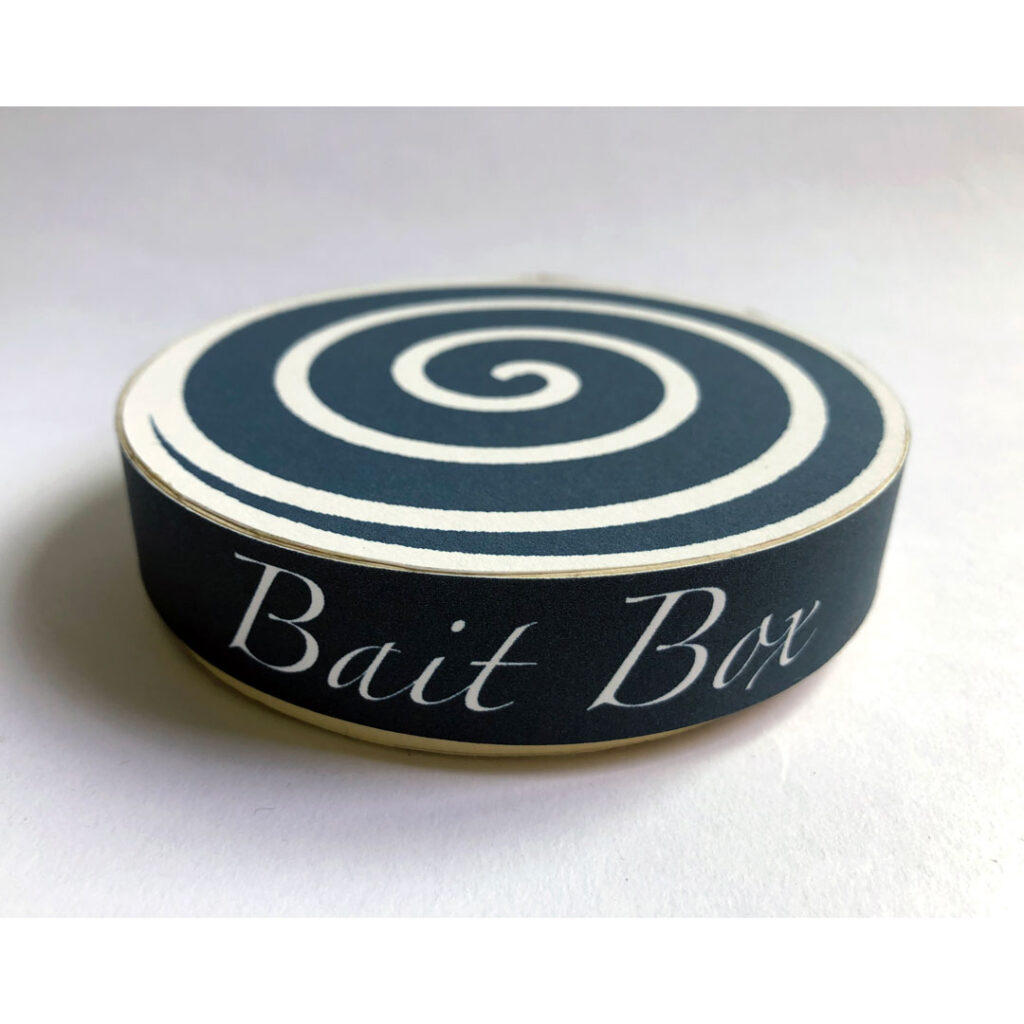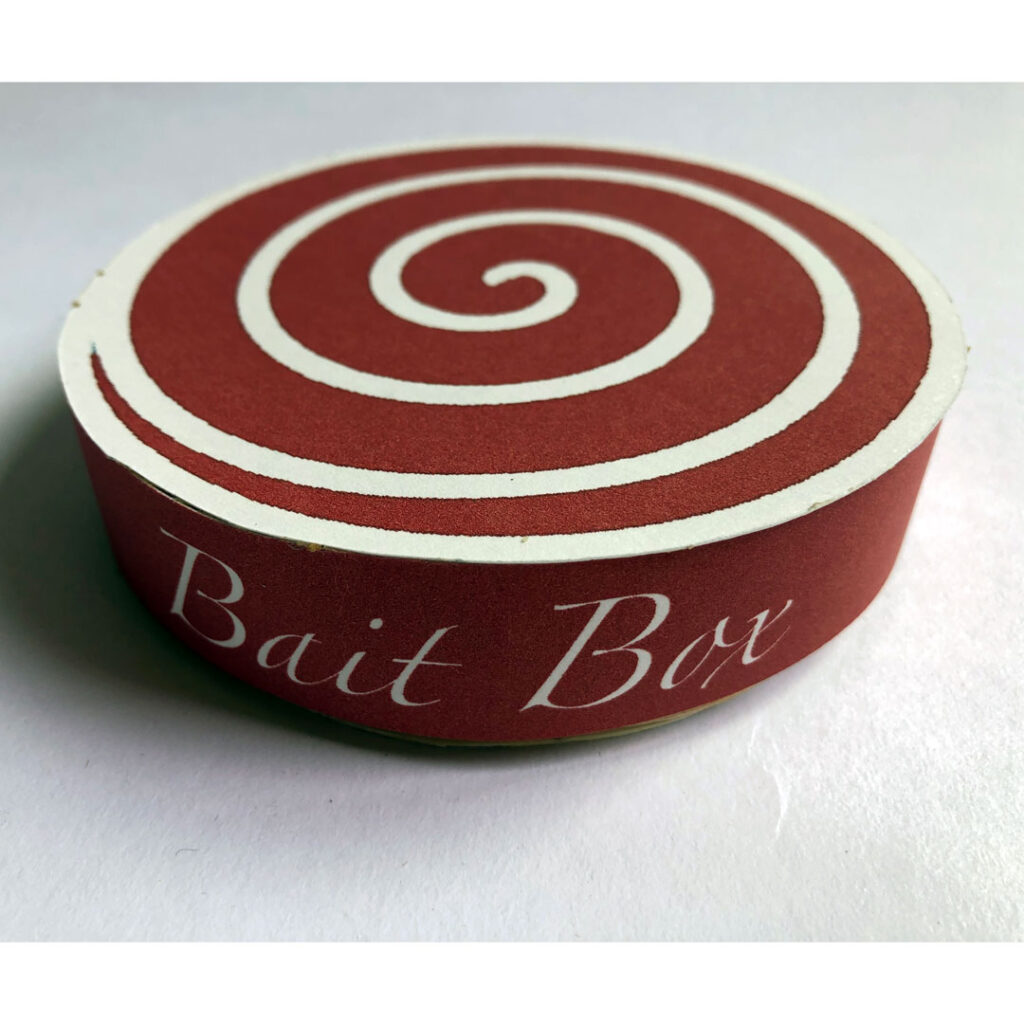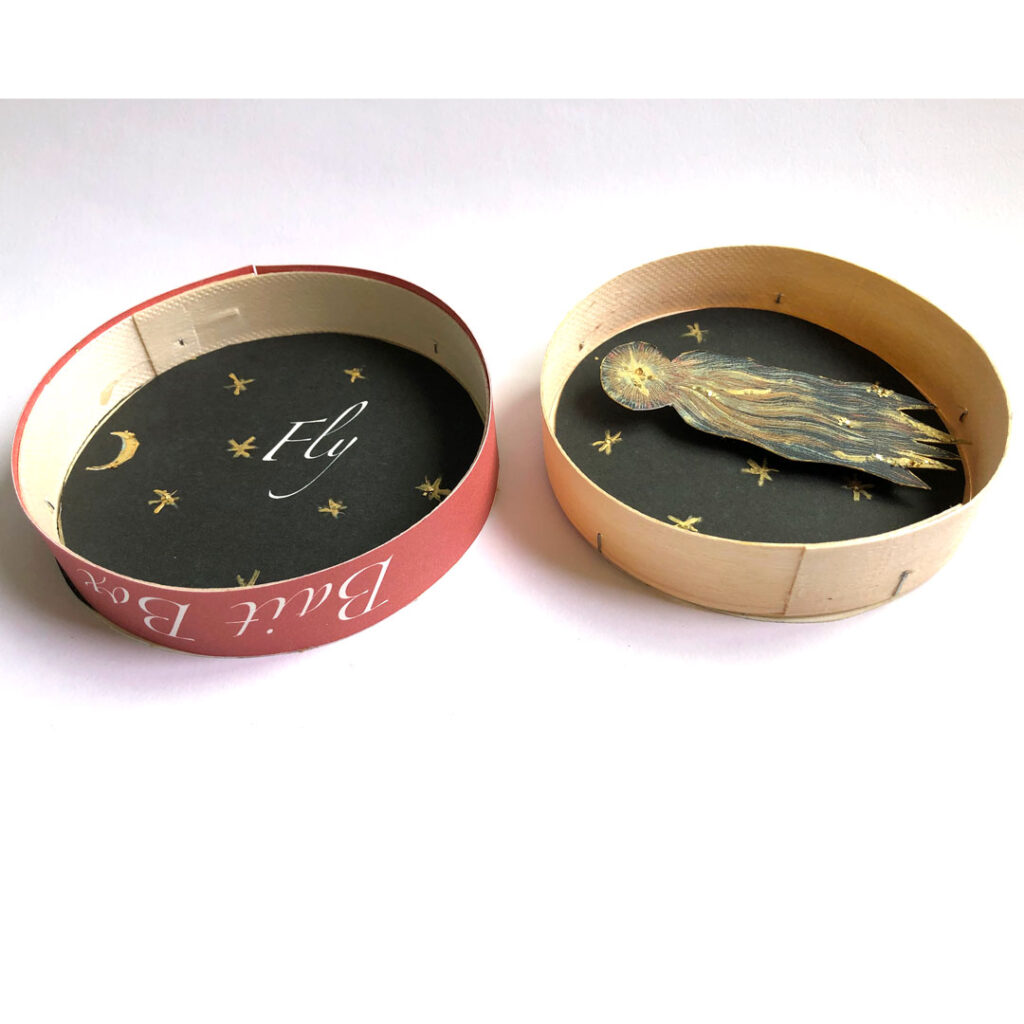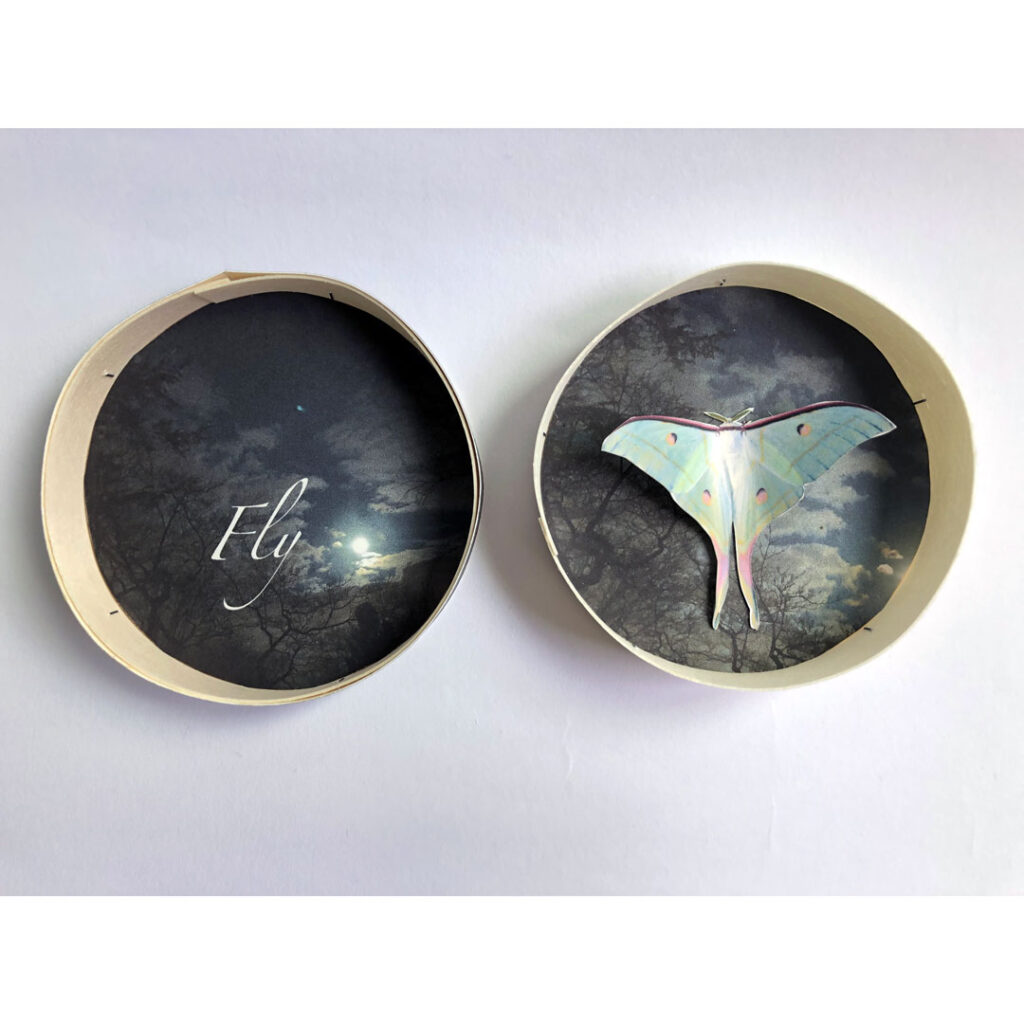Wyncote Hours is a meditation on a finite geographic location.


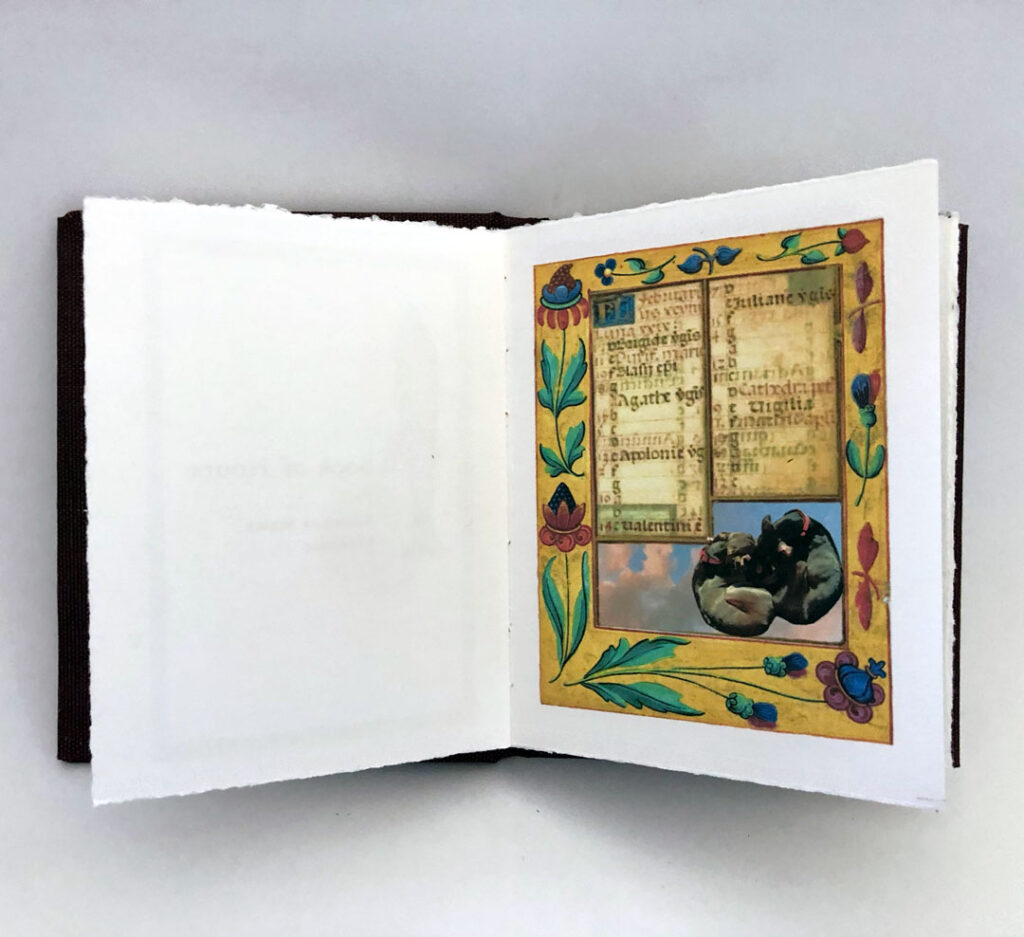
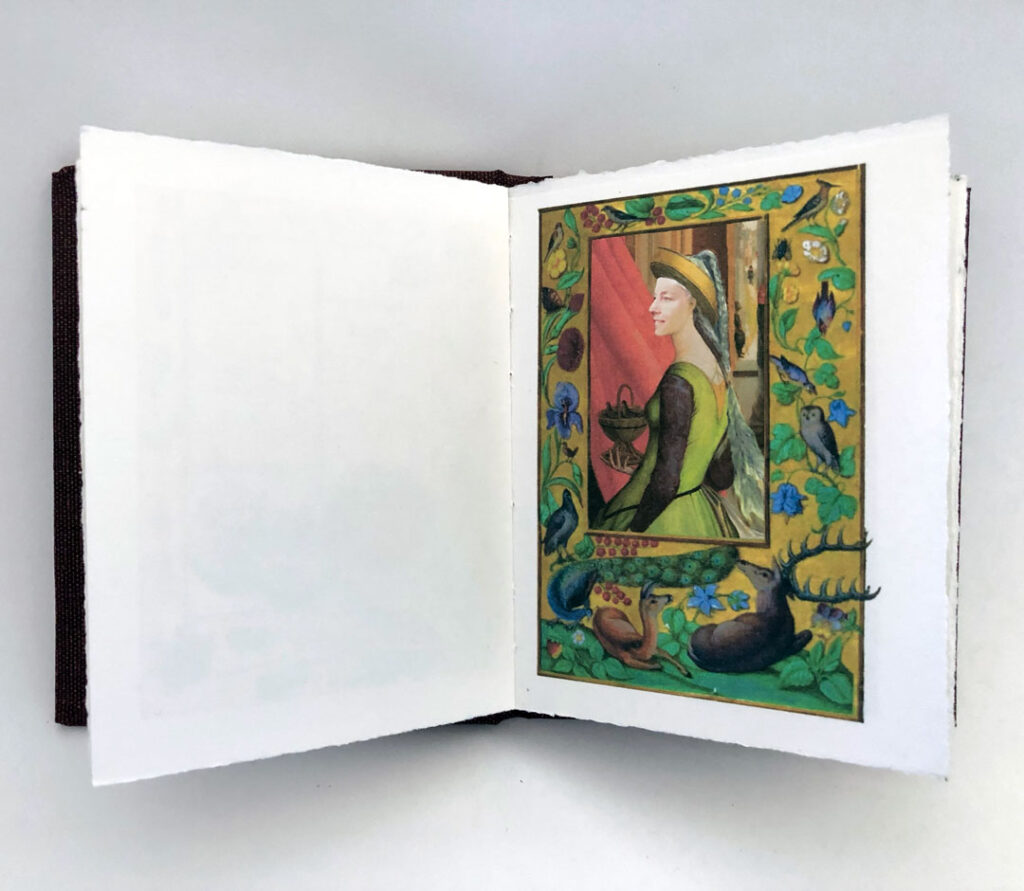
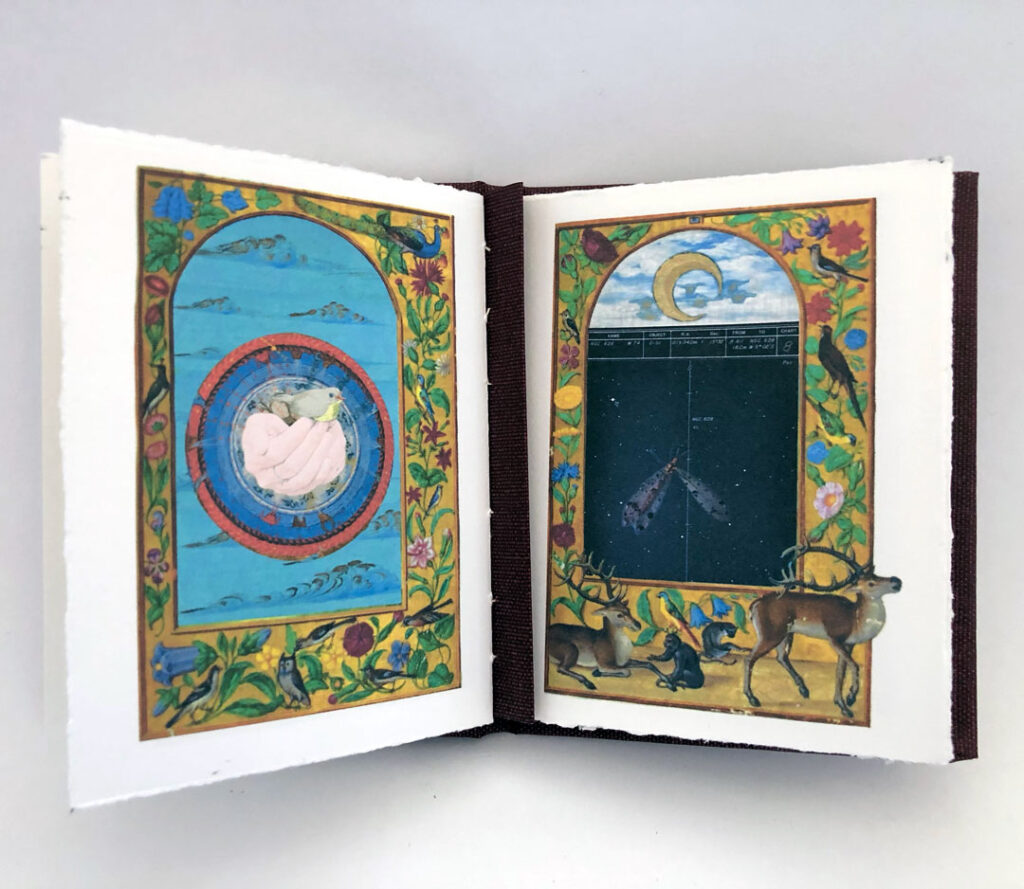
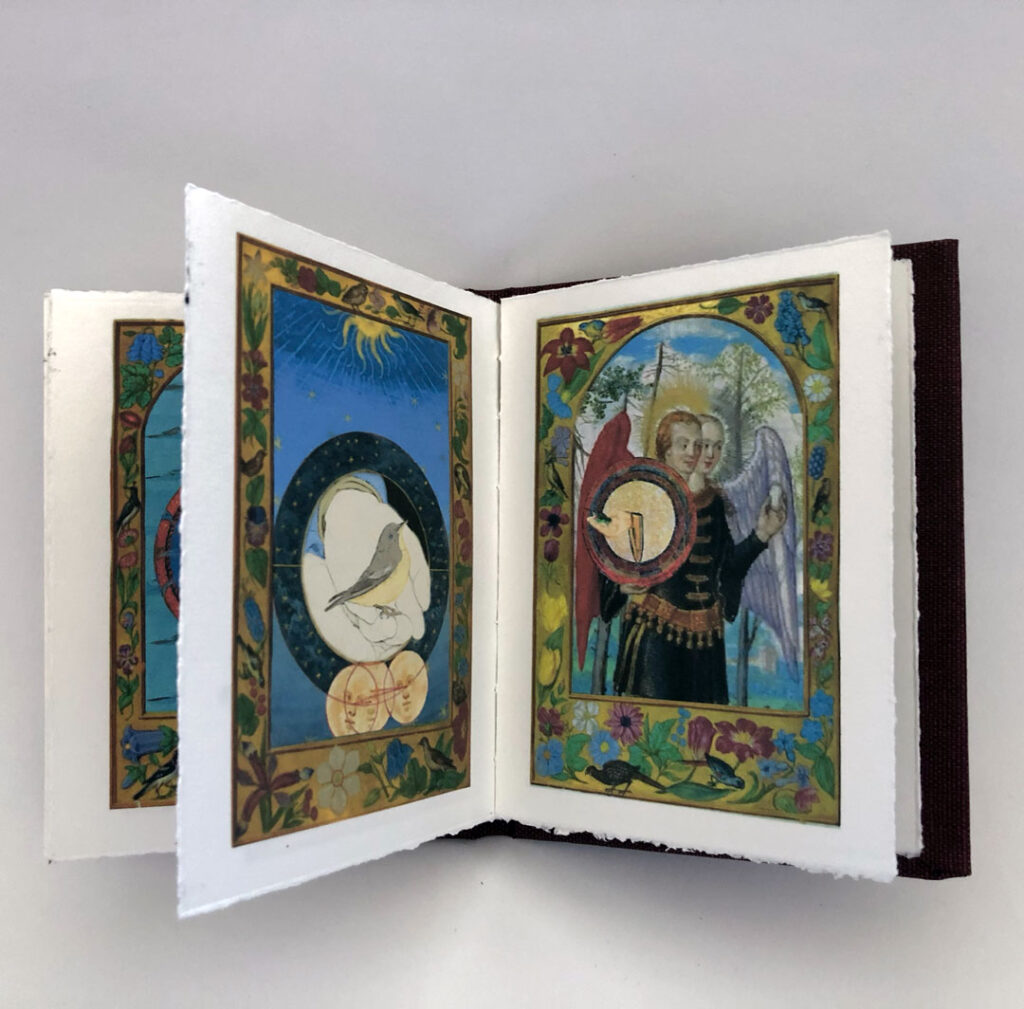
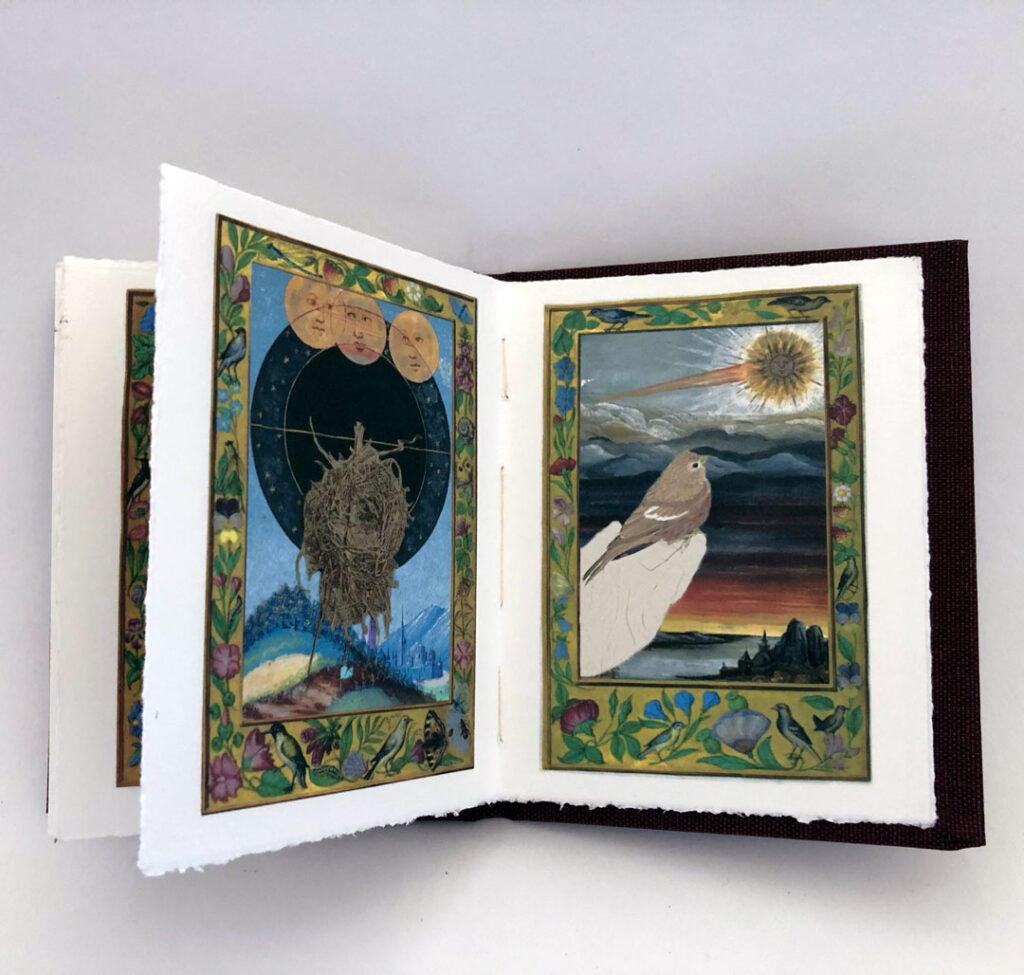

Journey. My map was inspired by the Hungarian legend of Hunor and Magor who the Gesta Hungarorum purports to be the ancestors of the Huns and the Magyars. In the legend, the brothers follow the magical white stag rather than killing it.

Hunor and Magor teach us what I believe may be the most important lesson; That the need to acquire objects or developing great attachment to place can greatly diminish ones openness to new opportunities and possibilities.
A meditation on the tension between permanence, transience, the ephemeral and transformation, Habitat: Duplex reflects, both the artist’s personal history, as well as the broader history of her environment, Pennsylvania.
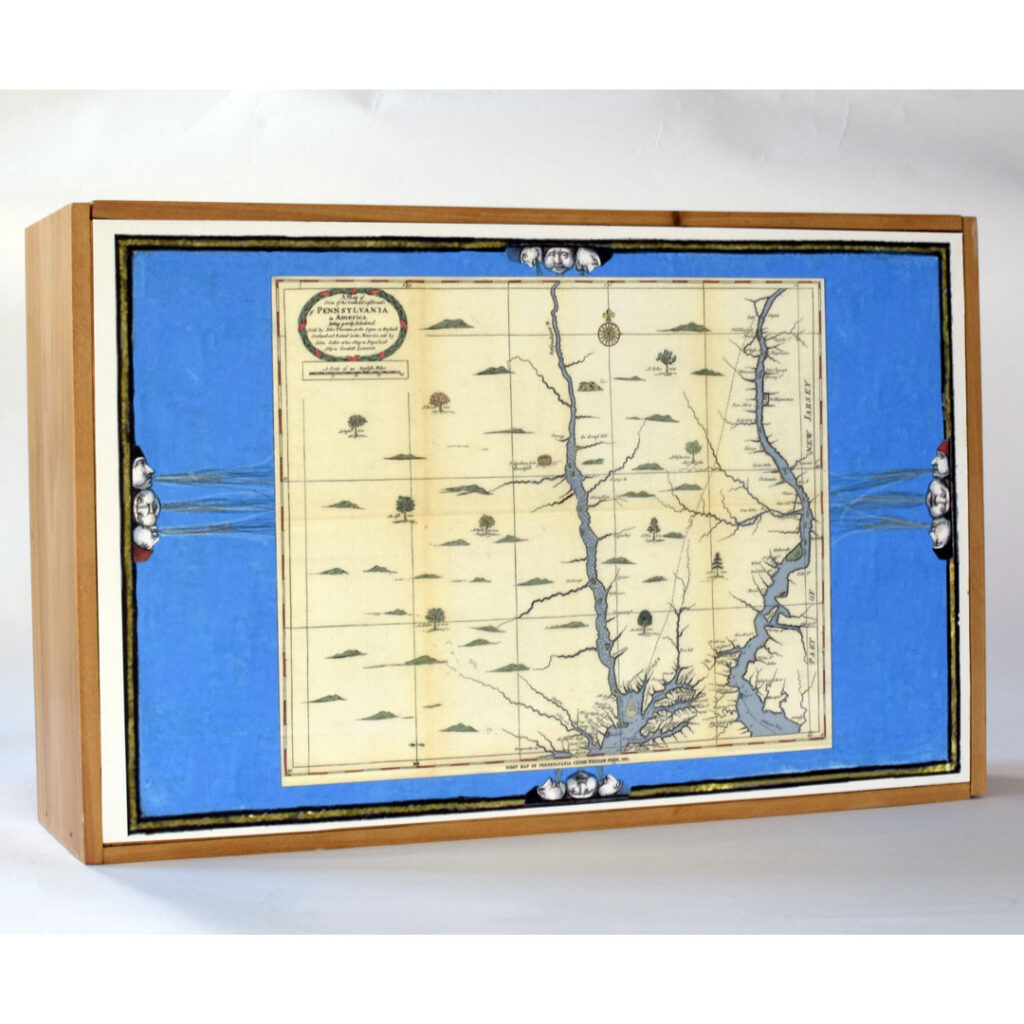
The content stems from her combined family of Early Pennsylvania settlers who mapped the land and moved the indigenous people to create permanent settlements of land owners
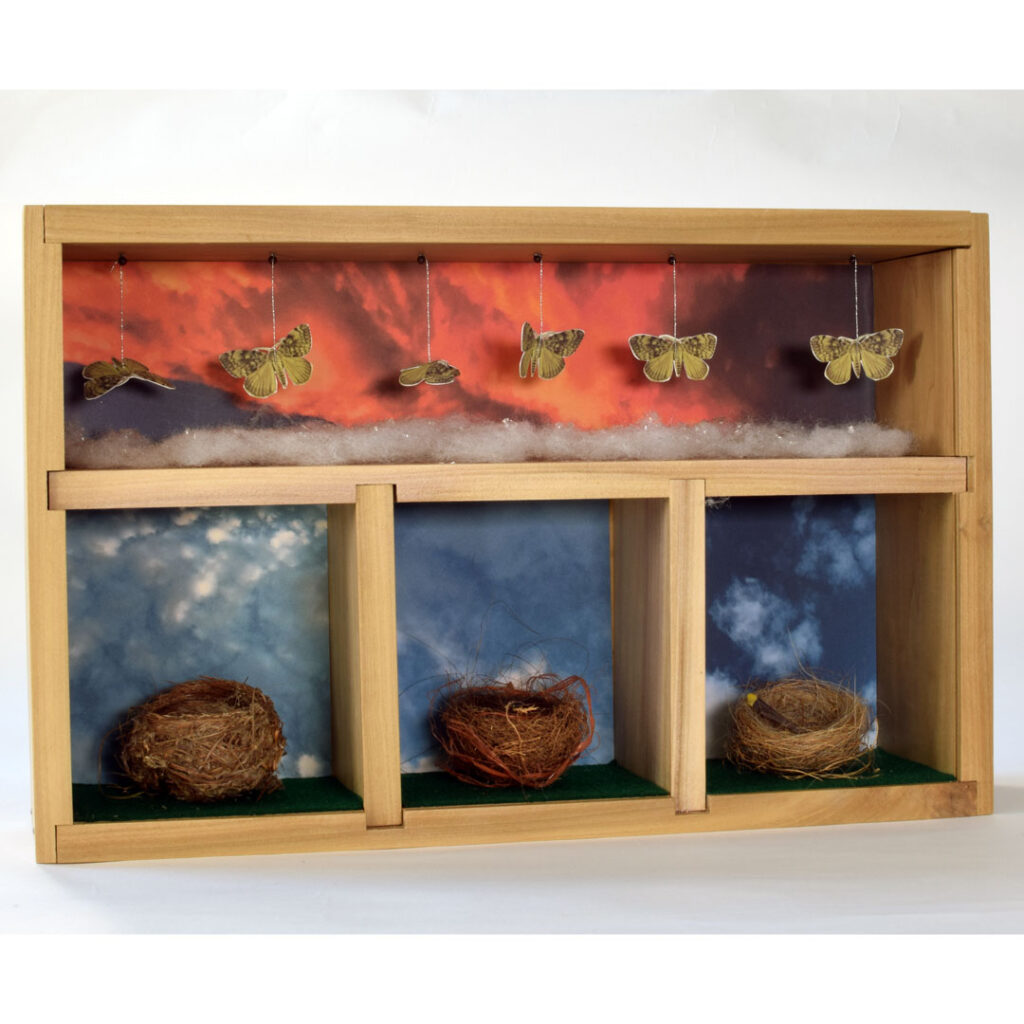
and Early 20th century settlers, who left their transient lives behind, their former identity largely coded and hidden from view in her family.
Gypsy Moths arrived in Pennsylvania in 1932.
“A menacing pest just became a bit less problematic, at least socially, after getting an update to its common name. Lymantria dispar is an invasive insect previously known as the gypsy moth — a label that contains an ethnic slur. On March 2, the Entomological Society of America renamed L. dispar the spongy moth.”
Jude Coleman “The spongy moth’s new name replaces an ethnic slur:
Entomologists chose the common name as a nod to the invasive species’ eggs.” March 10, 2022, 9:00 AM., https://www.sciencenews.org/article/spongy-moth-new-name-replaces-ethnic-slur
The World Books explore the themes of: alchemy, chance and magic together with the ability of art to produce results with these experiments.
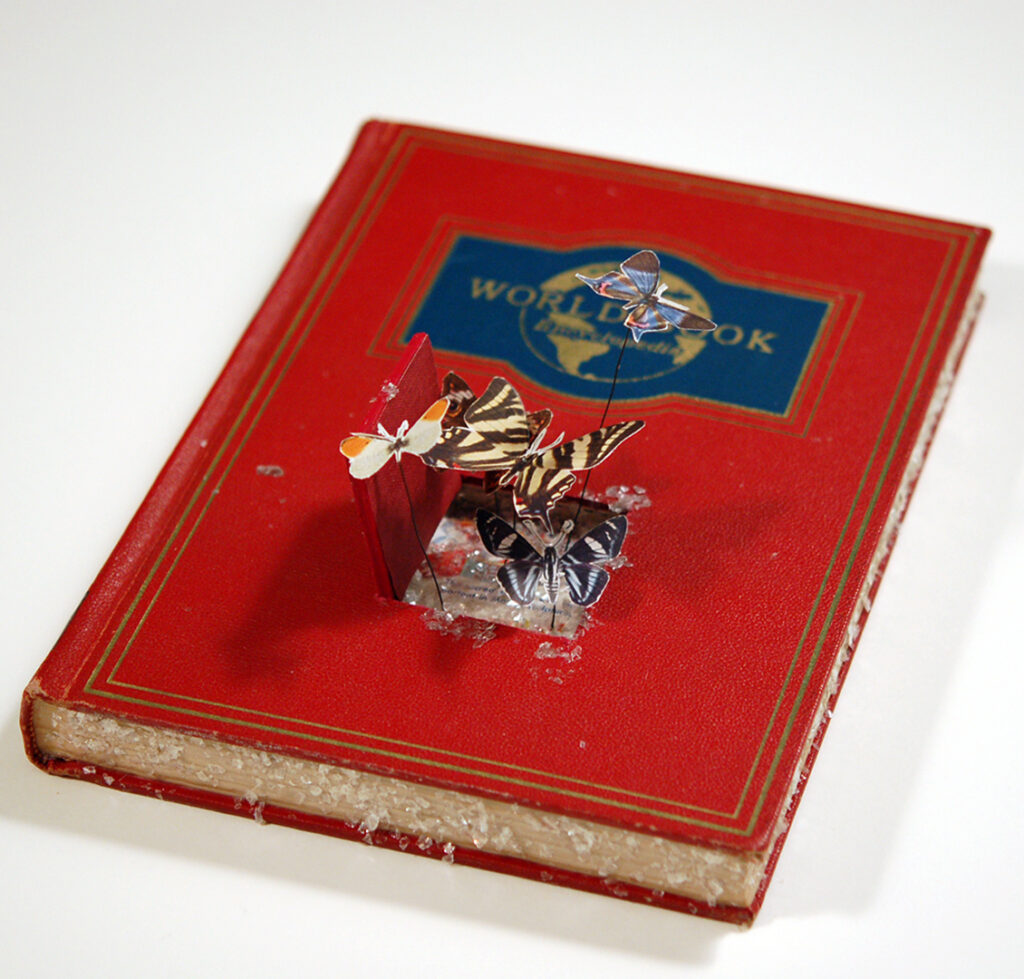
World Book volume “I” contains insects and ice. This book combines the two to produce the magic of butterflies emerging from a frozen book.
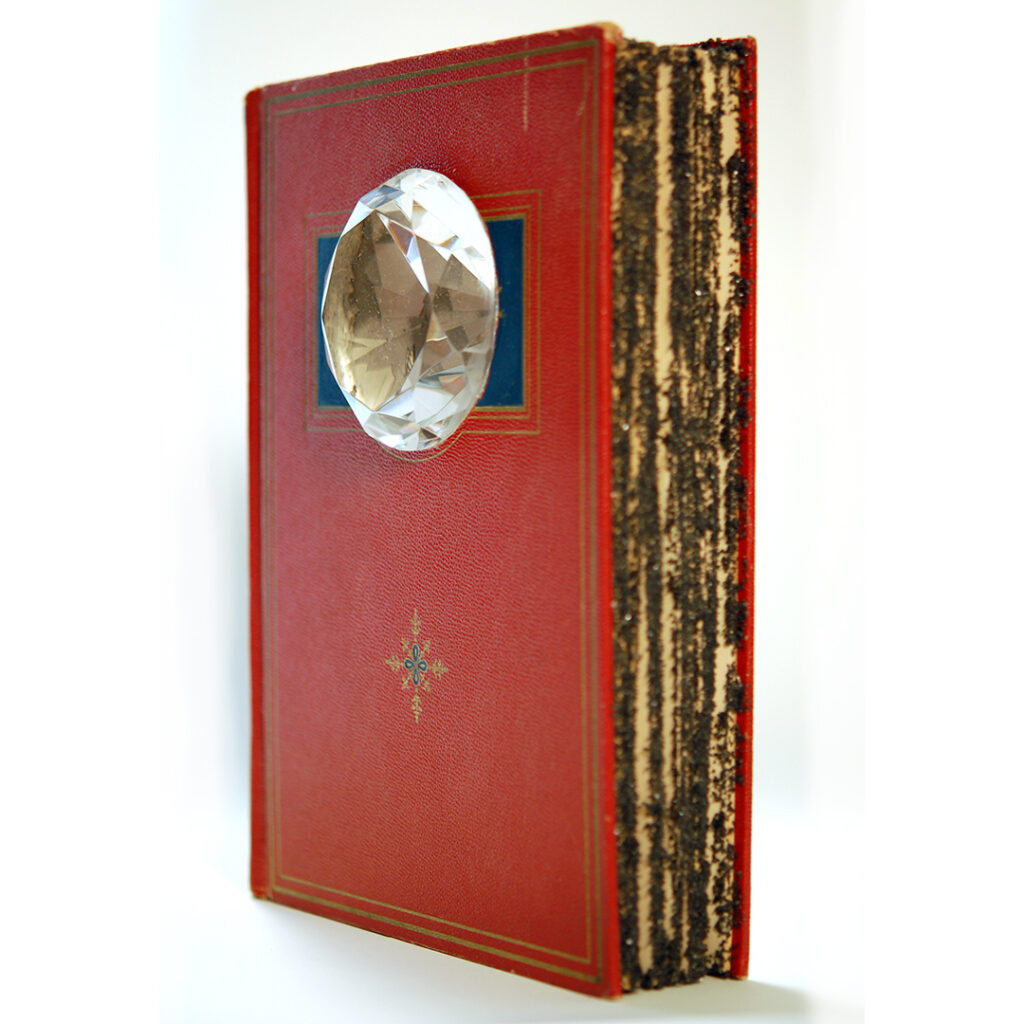
World Book “E” includes earth’s elements. Here carbon transforms into a diamond.

In World Book “F” a garden emerges and sprouts flowers from its very pages.
Tree of life is inspired by the Hungarian legend of Hunor and Magor who the Gesta Hungarorum purports to be the ancestors of the Huns and the Magyars. In the legend, the brothers follow the magical white stag rather than killing it, Hunor and Magor teach us what may be the most important lesson; That the need to acquire objects or developing great attachment to place can greatly diminish ones openness to new opportunities and possibilities.
Tree of life is a reflection of artist’s ethnic background, a combination of mobile Hungarians and early Pennsylvania German settlers who have continuously inhabited the same geographic area for over 300 years.
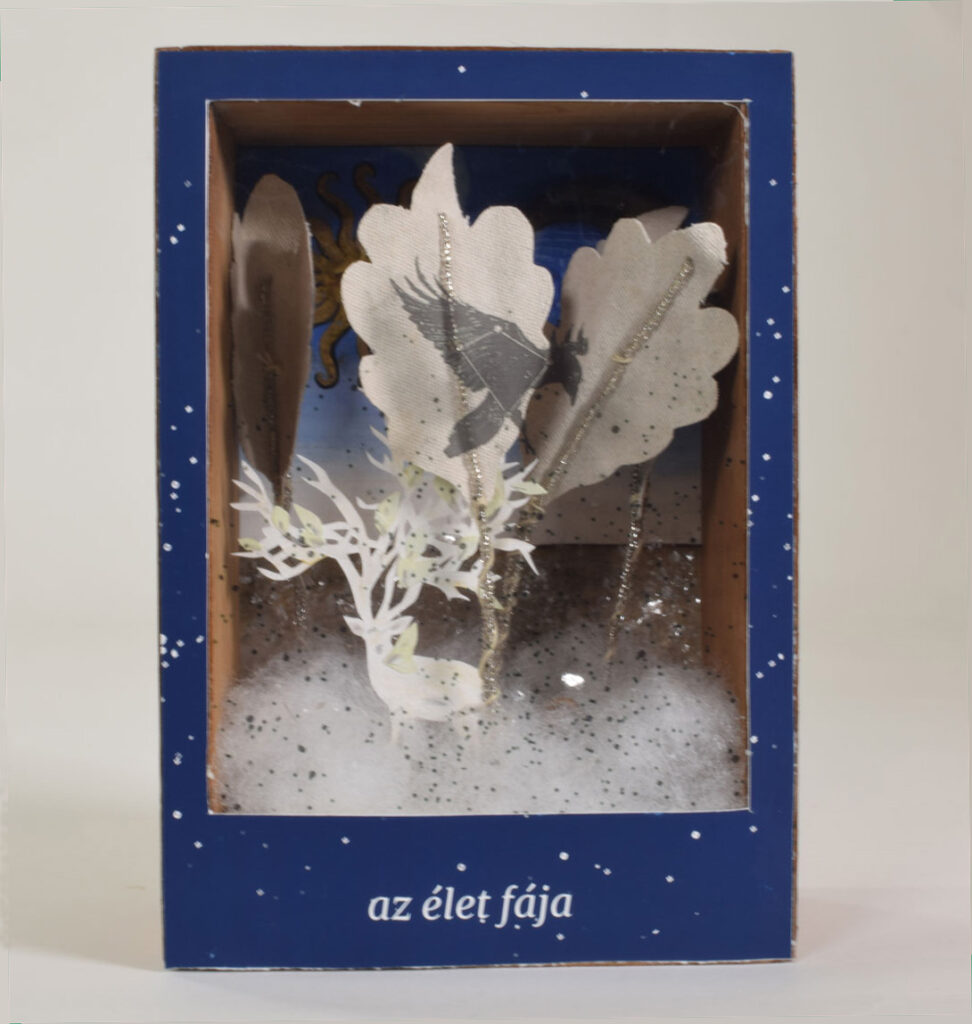
The first layer of the box illustrates the constellation Corvus. The crow/raven is a Hungarian symbol. There are several legends involving King Matthias, a medieval Hungarian king, a crow and a gold ring.
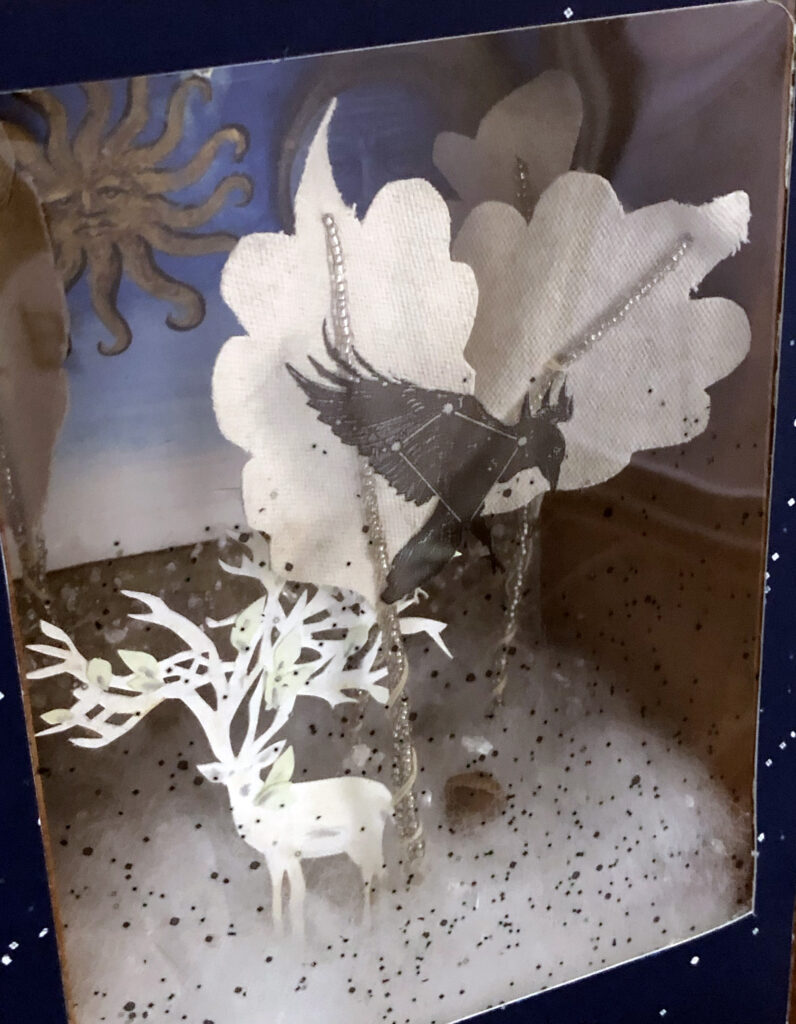
Inside, the white stag of the Hunor and Magor legend has merged with the tree of life and is standing in a forest of oak trees. Oaks being a German national symbol. The imaginary forest is overlooked simultaneously by the sun and moon, which commonly appear in Hungarian tree of life imagery.
The acorn resting in the snow is from a Willow Oak that stood on the grounds of the artist’s art school. A seed from a school that no longer exists.

Hunt is the distillation of the artist’s ethnic background, a combination of mobile Hungarians and early Pennsylvania settlers who have continuously inhabited the same geographic area for over 300 years. Hunt visualizes the hereditary pull of the Hungarian legend of Hunor and Magor who the Gesta Hungarorum purports to be the ancestors of the Huns and the Magyars. In the legend, the brothers follow the magical white stag rather than killing it. Hunt reflects the choices that are made to set down roots or being compelled not to.

Hunt is a box constructed of Tulip Poplar (Liriodendron tulipifera) a tree native to Pennsylvania and commonly used in the construction of early Pennsylvania furniture. The view looks through the constellations Canis Major and Canis Minor (Orion’s hunting dogs) at an arrow being toted across the night sky by two Luna moths. The constellation Rangifer (the Reindeer) no longer a recognized constellation fills the scene.
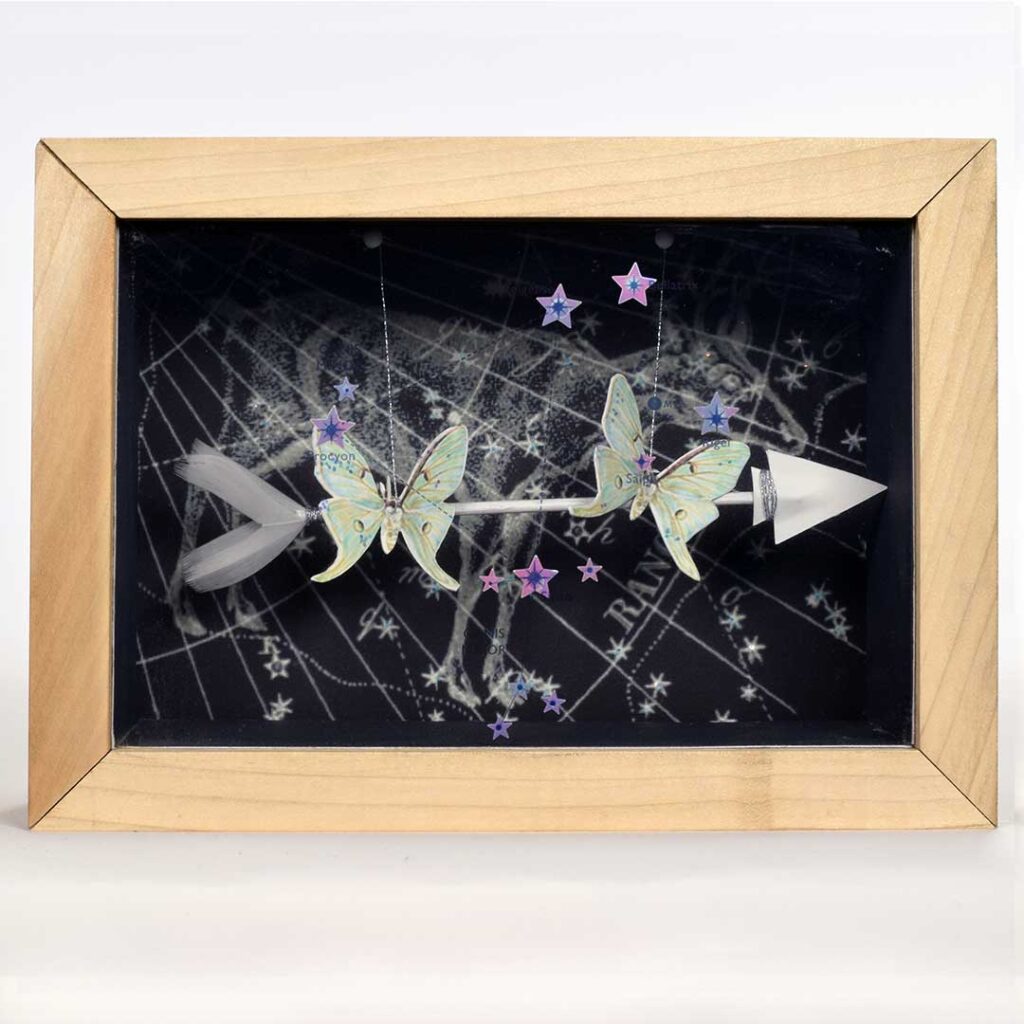
Journey (book and box)
Journey is inspired by the Hungarian legend of Hunor and Magor who the Gesta Hungarorum purports to be the ancestors of the Huns and the Magyars. In the legend, the brothers follow the magical white stag rather than killing it, Hunor and Magor teach us what may be the most important lesson; That the need to acquire objects or developing great attachment to place can greatly diminish ones openness to new opportunities and possibilities.
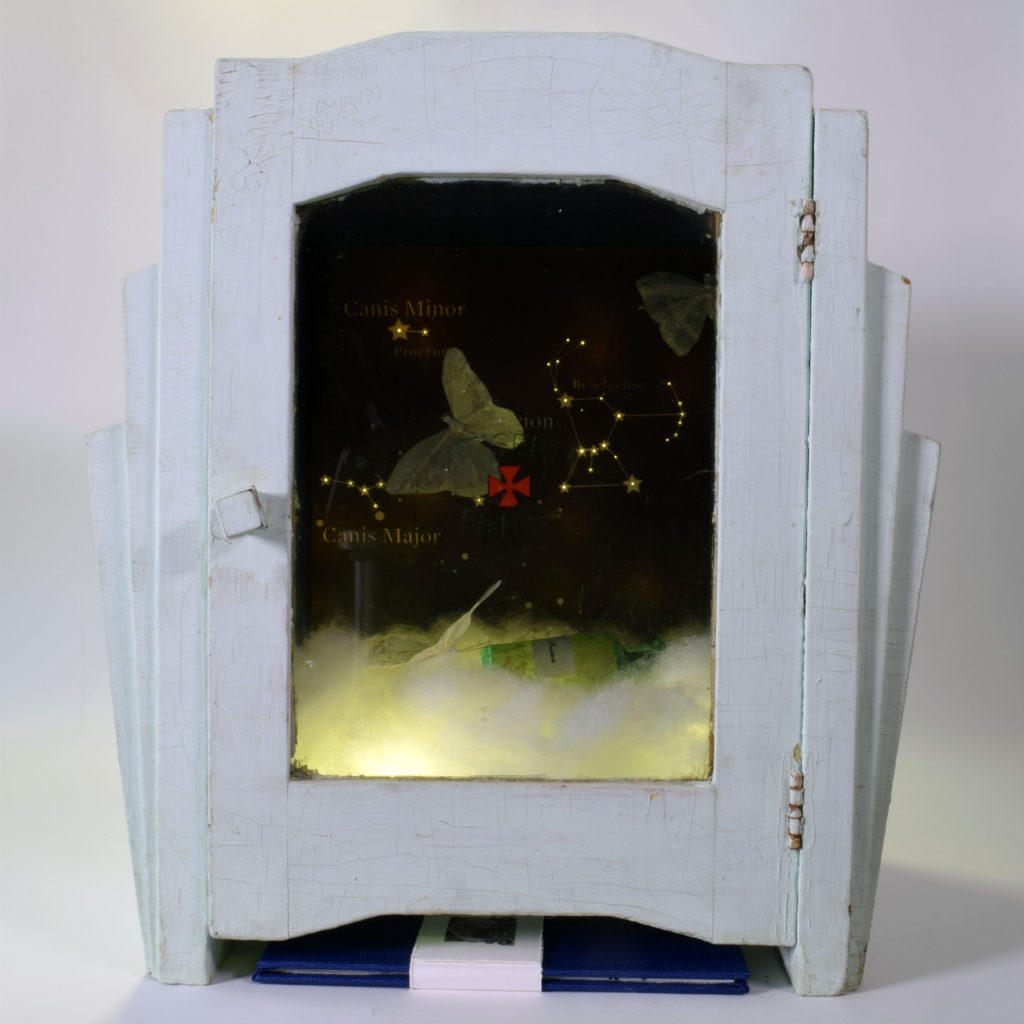
The box is a sterilizer. Inside white butterflies fly through the night sky above the crystalline clouds cleverly avoiding the poison meant for preserving butterflies in butterfly collections. They fly past Orion, the hunter and his dogs Canis Major and Canis Minor.
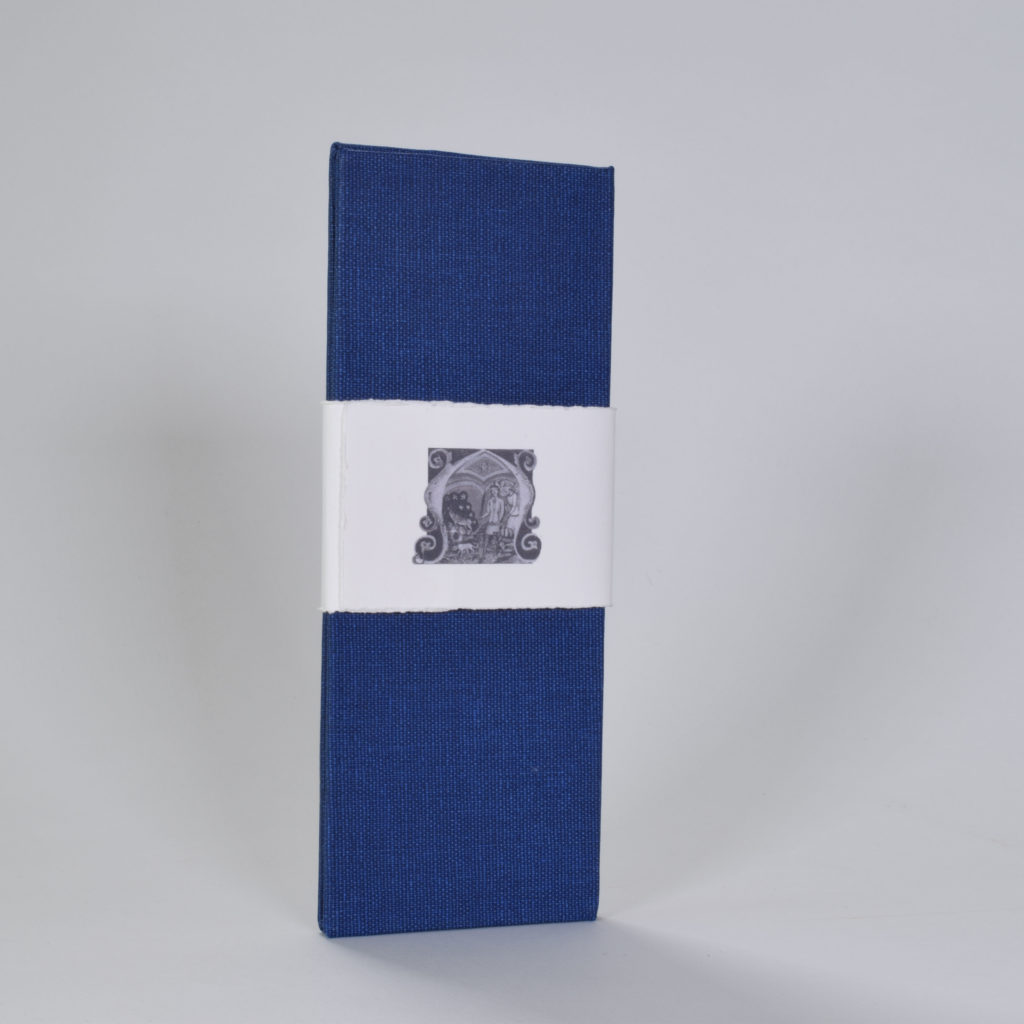
The book is closed with an illuminated initial of Hunor and Magor. Inside, three hounds pursue the white stag with the text: The hunters pursued the stag not because they wanted to kill it, but because it lead them on an adventure to capture happiness. A map of Hunor and Magor’s journey is on the other side.
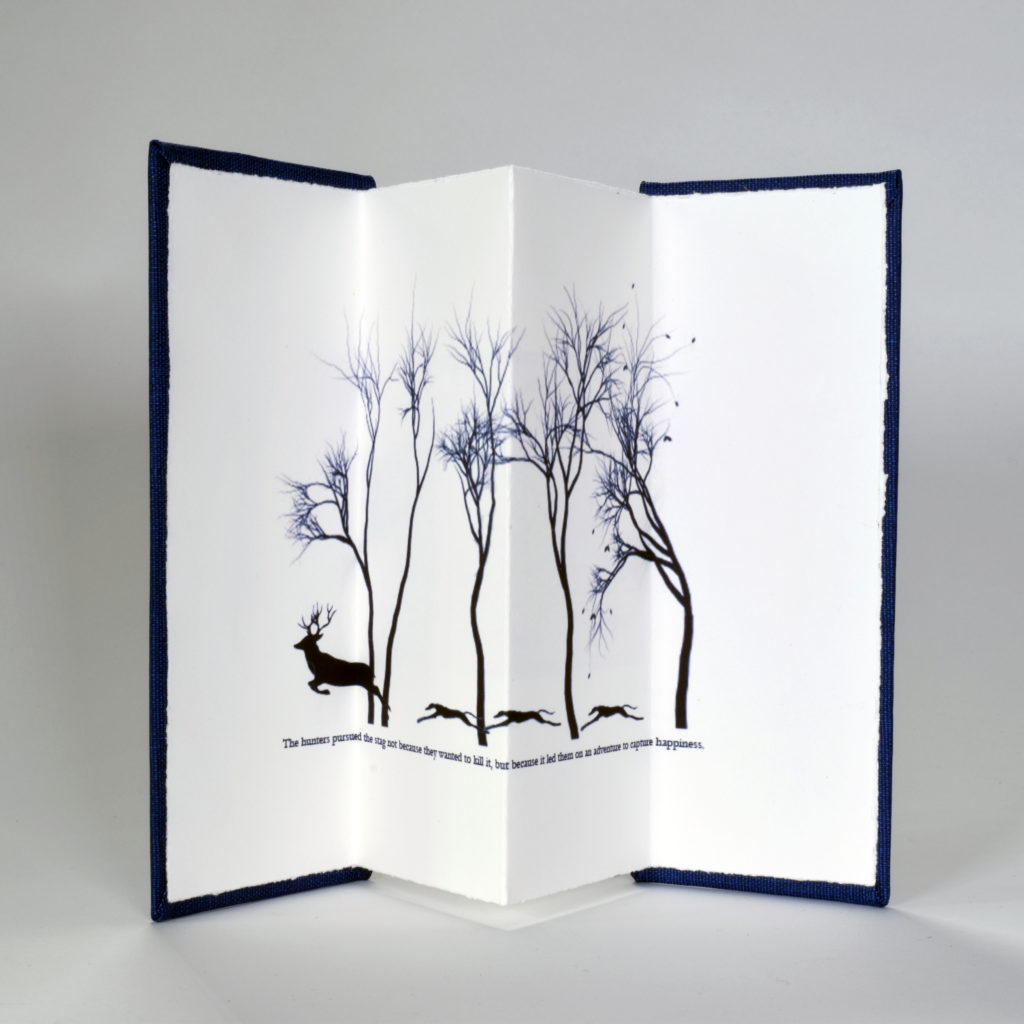
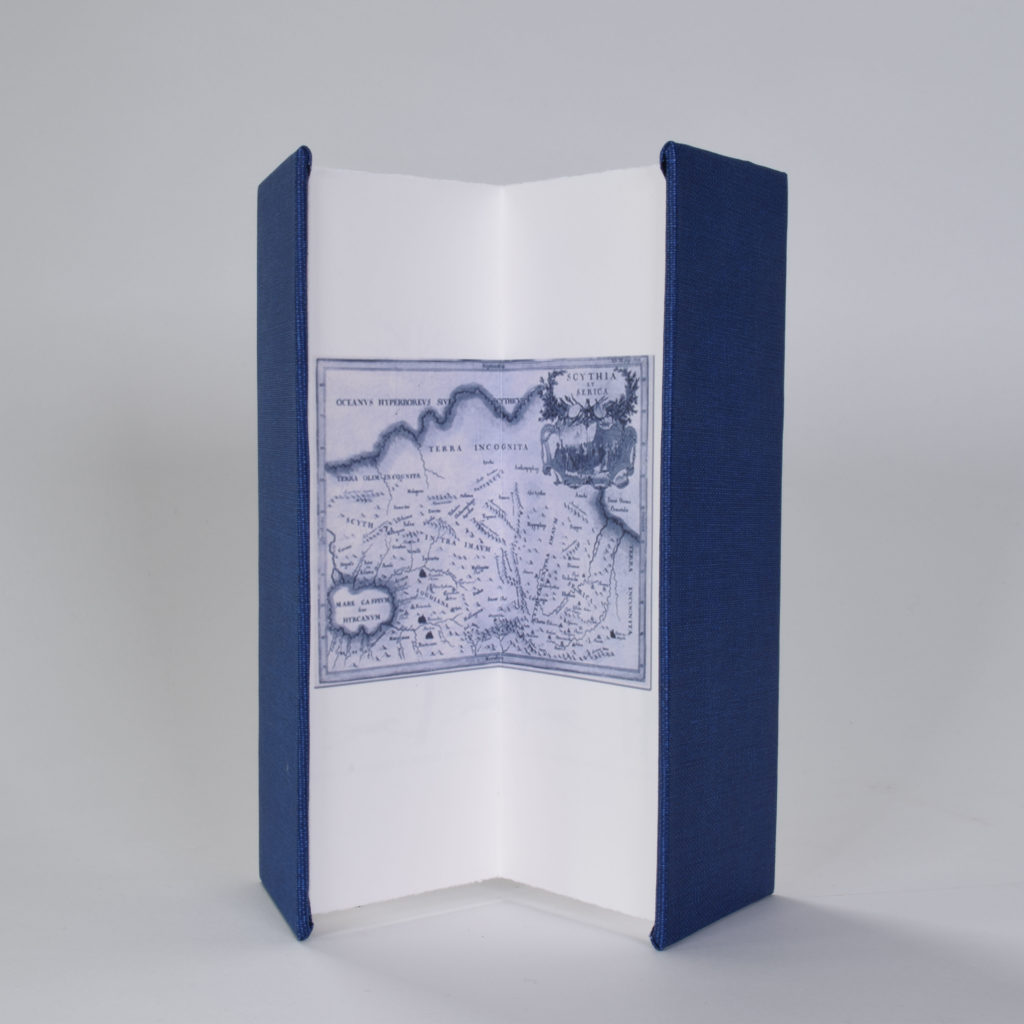
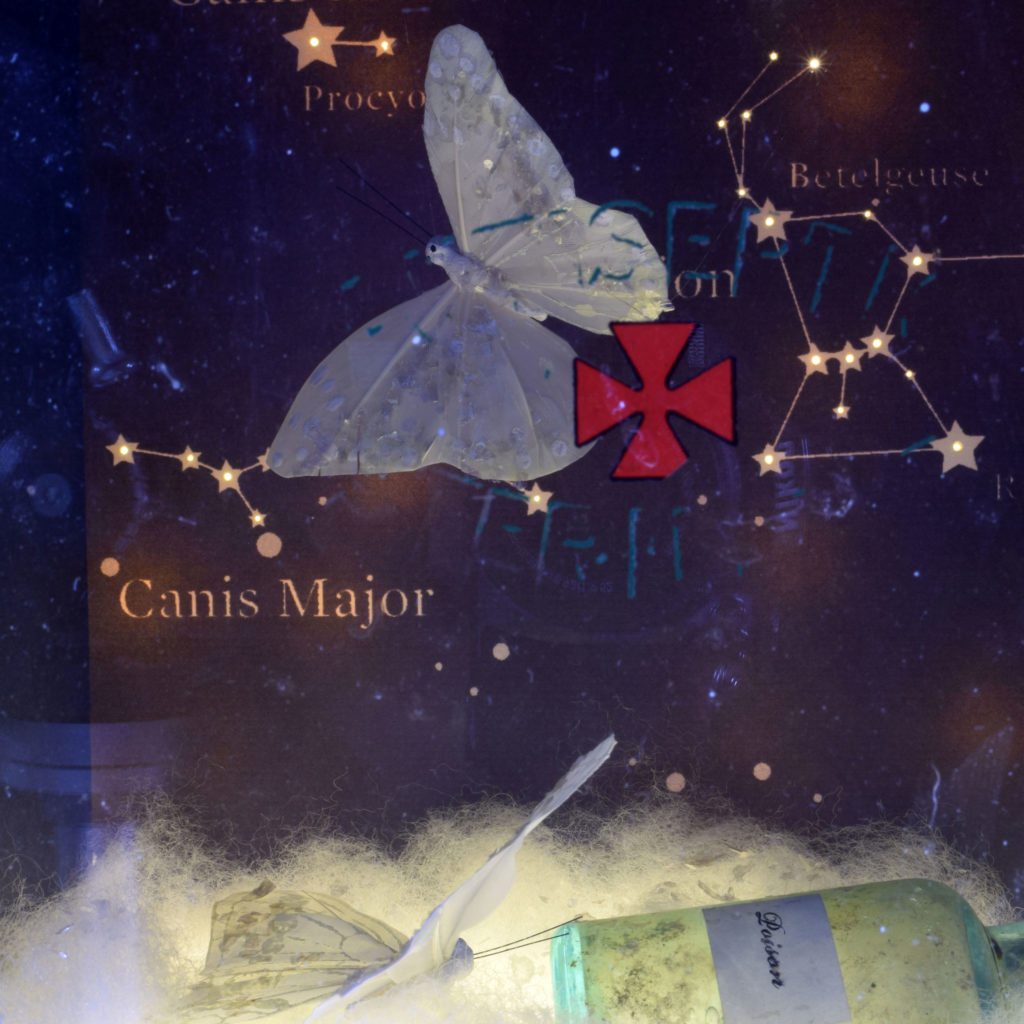
The title, Stilla Maris, comes from St. Jerome who translated Mary’s name to be Miryam, meaning a drop in the Sea in Hebrew to the Latin, Stilla Maris, which means a drop in the ocean.
Some the imagery on the pages in this book include:

La Virge de la Sainte Chapelle with a lily. The Virgin, a symbol of purity stands on a tomato. She is positioned similarly to images of the Virgin vanquishing the Eden Serpent. The tomato is a fruit that is not sweet and is commonly called a vegetable. Tomato is also a slang term for a woman.
The definition of the word fruit with a border together with a tiny woman eating a huge pomegranate (the pomegranate is a symbol for the virgin).
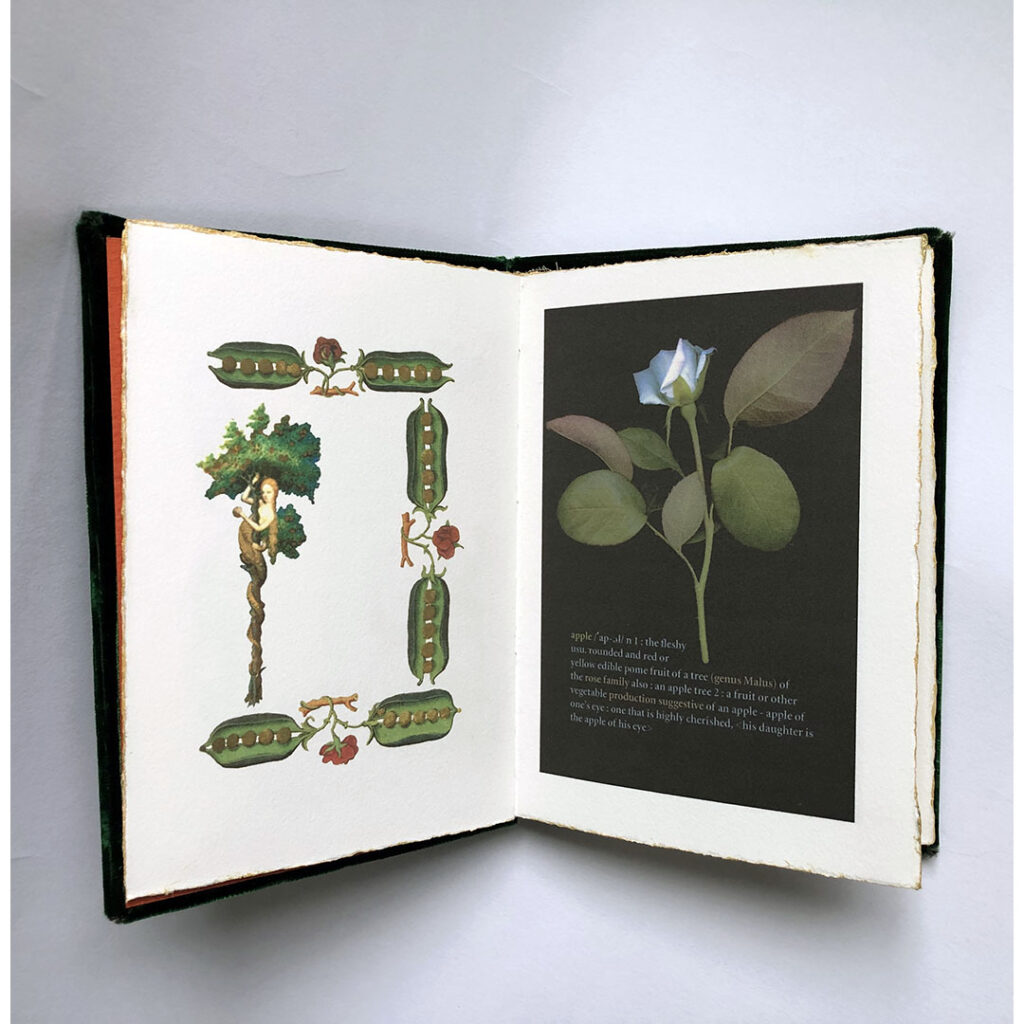
The Eden Serpent from the Très Riches Heures du Duc de Berry with pea pods, a symbol of fertility.
A blue rose is on another page with the definition of the word Apple. The blue rose is a symbol of impossibility juxtaposed with Apple (from the Garden of Eden) being from the “rose family” and the rose another symbol for the Virgin.
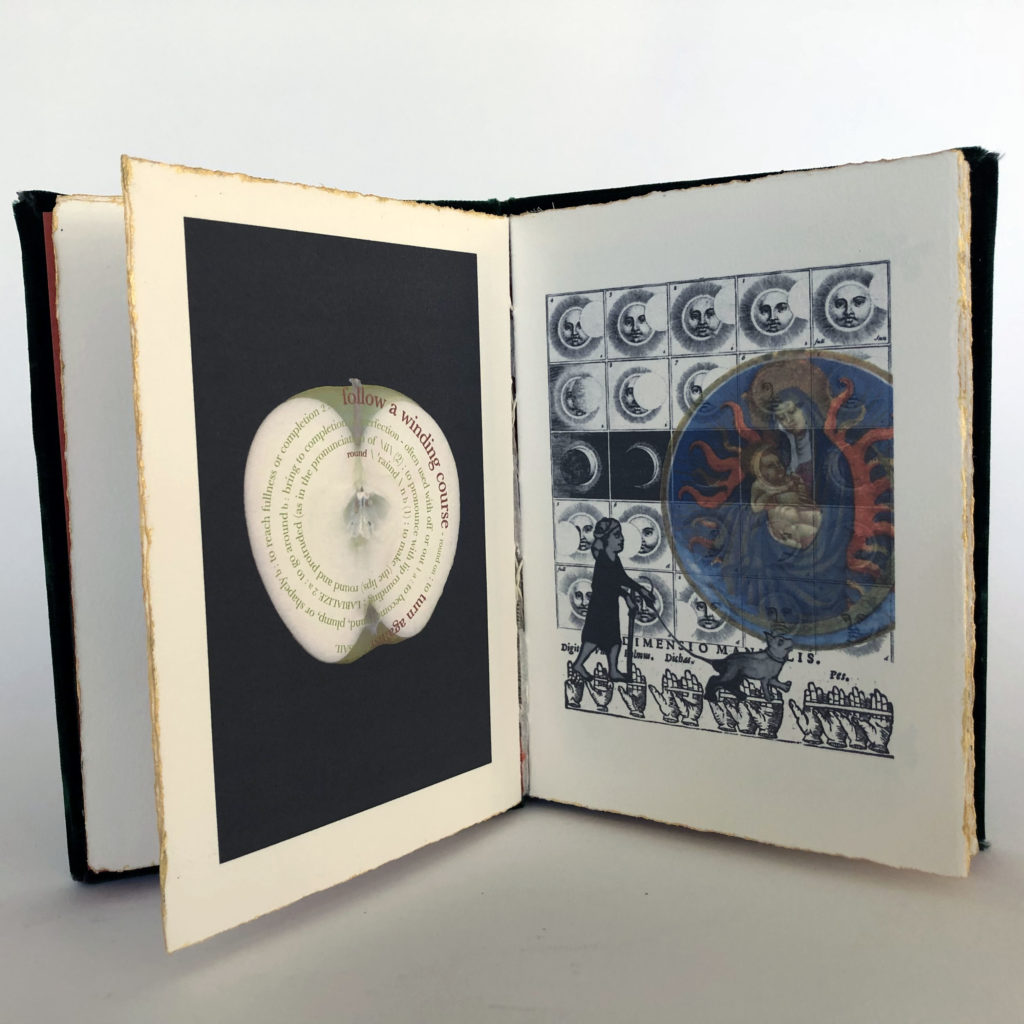
An image of an apple with the definition of the word round. Round relating to the word round in the fruit definition and round relating to the virgin (round yon virgin…)
The virgin and child in a mandorla (the bright rays of the sun) from the Très Riches Heures du Duc de Berry combined with a Nutting (1715) drawing of the stages of an eclipse of the sun. A medieval blindman walks across the frame, a reminder the looking into the sun can cause blindness.
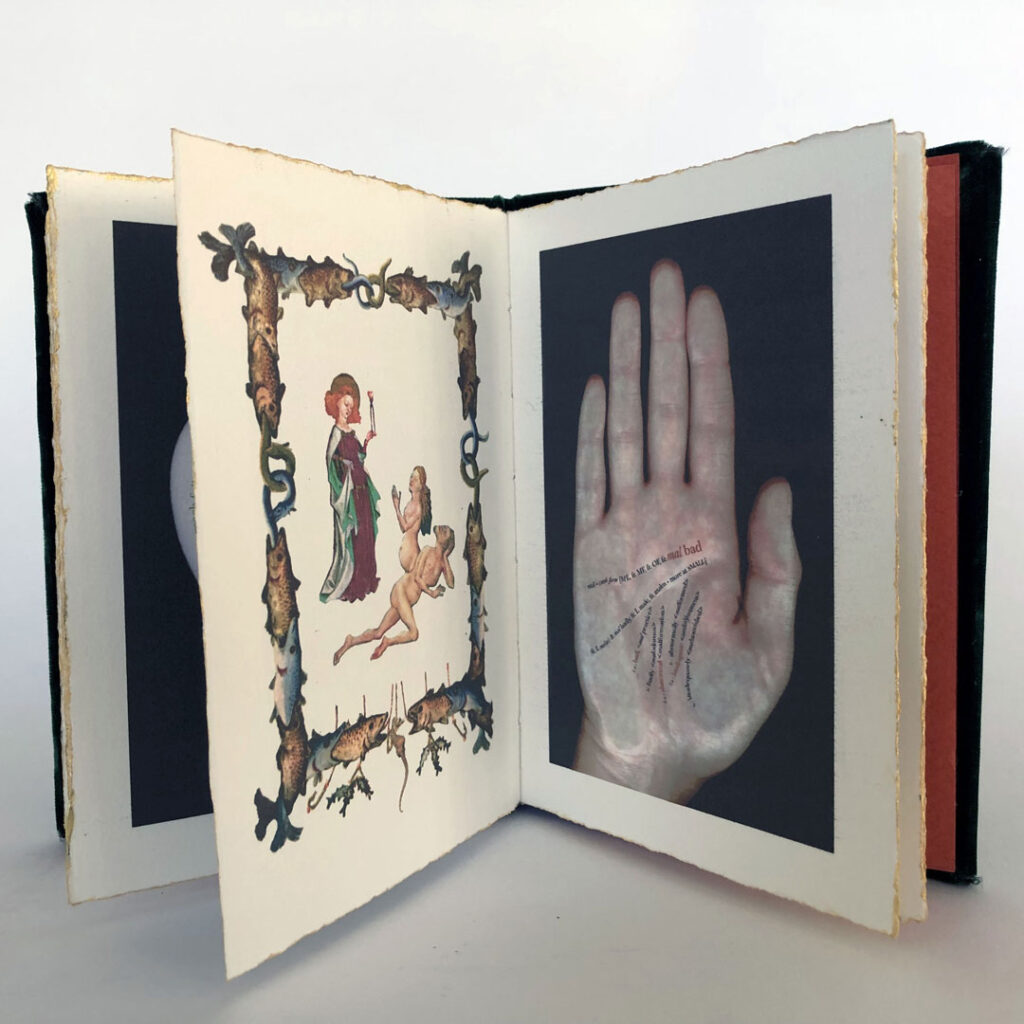
St. Agatha delivers Eve as Adam gives birth. St. Agatha is an early christian virgin martyr who was tortured including the crushing and cutting off of her breasts. The border of fish includes seahorses, a species where males carry the young.
A hand is pictured with the definition of the word malus. The apple being from “the rose family” which is the “genus malus”. The definition is incised on the hand like a palm reader’s chart of the lines on the hand.

Another page has a border of bird cages and the woman-headed, winged eden serpent from a medieval miniature.
Finally, an older man teaches a younger man how to read an astrolabe. An astrolabe is used to navigate the sea, relating to Stilla Maris. Along with bees which are a symbol of immaculate conception because they were believed to reproduce without sex.
Fruit, examines the persistence of the perceived spiritual/sensual duality of women in western culture.
The box is a sterilizer.
Images of lovers, the definition of the word fruit, and two bottles, one with measurements and the words “quality” and “purity” and the other Lime Water, which is used to induce vomiting, are inside the box
The sides of the box feature images that the viewer looks through to see the images and objects on the inside. The box itself references a common explanation for immaculate conception.“Just as light passes through glass without shattering it.”
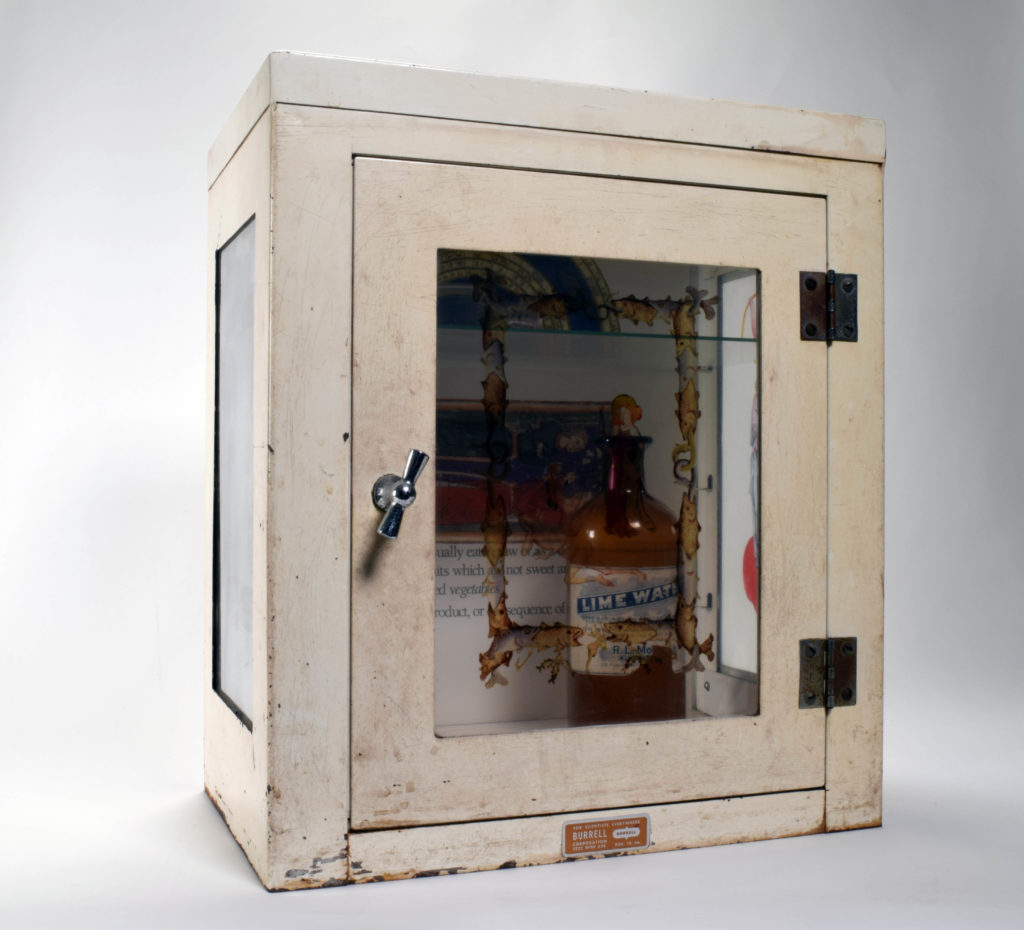
The front panel depicts St. Agatha delivering Eve as Adam gives birth. St. Agatha is an early christian virgin martyr who was tortured including the crushing and cutting off of her breasts. The border of fish includes seahorses, a species where males carry the young.
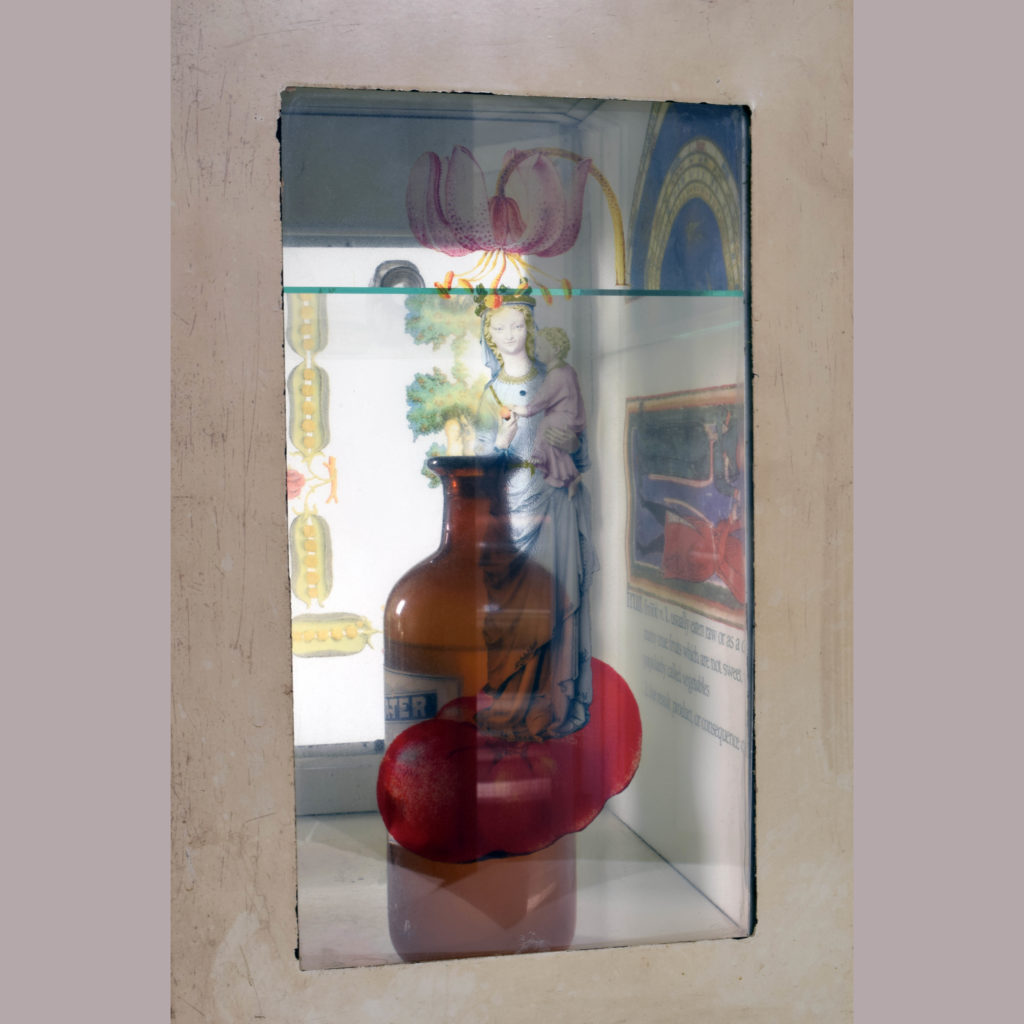
The right side of the box features La Virge de la Sainte Chapelle with a lily. The Virgin, a symbol of purity stands on a tomato. She is positioned similarly to images of the Virgin vanquishing the Eden Serpent. The tomato is a fruit that is not sweet and is commonly called a vegetable. Tomato is also a slang term for a woman.

The Eden Serpent from the Très Riches Heures du Duc de Berry with pea pods, a symbol of fertility, are on the left side of the box.
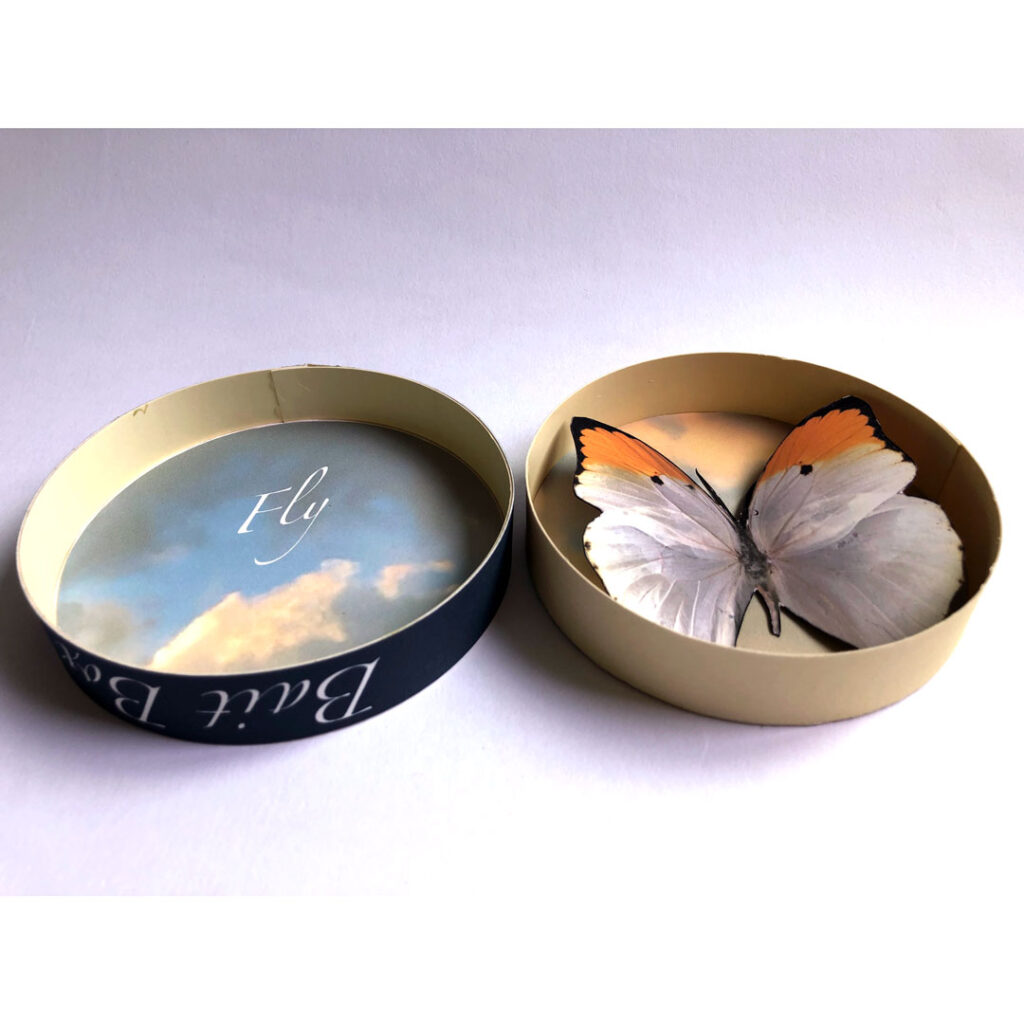
The Bait Boxes address the tension between freedom and constriction. They are little wonders that conjure infinite space from a circumscribed realm.
